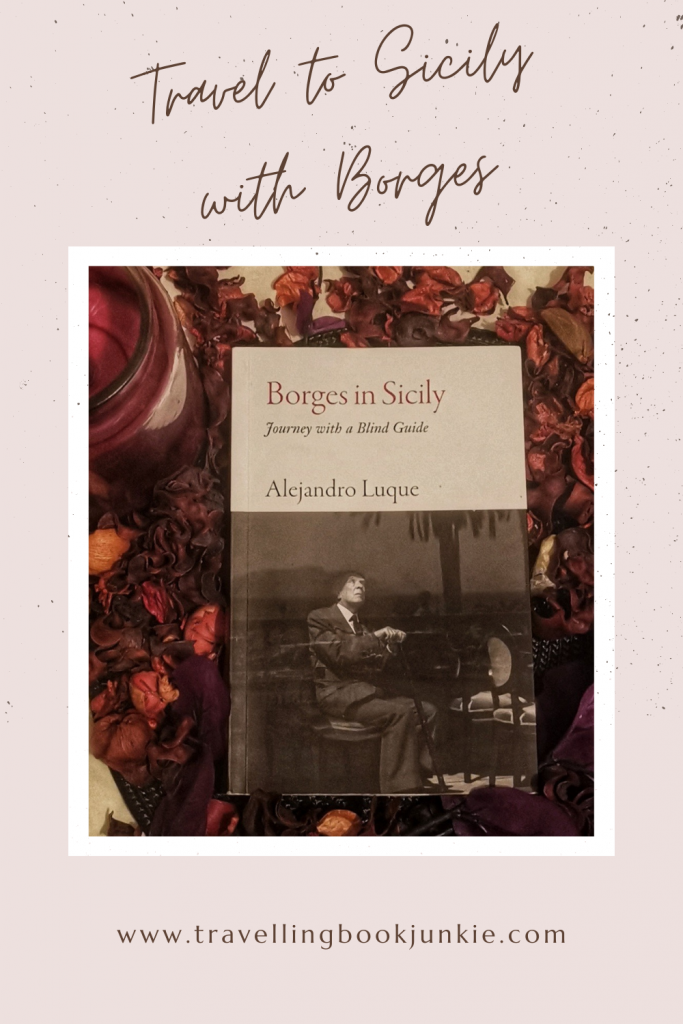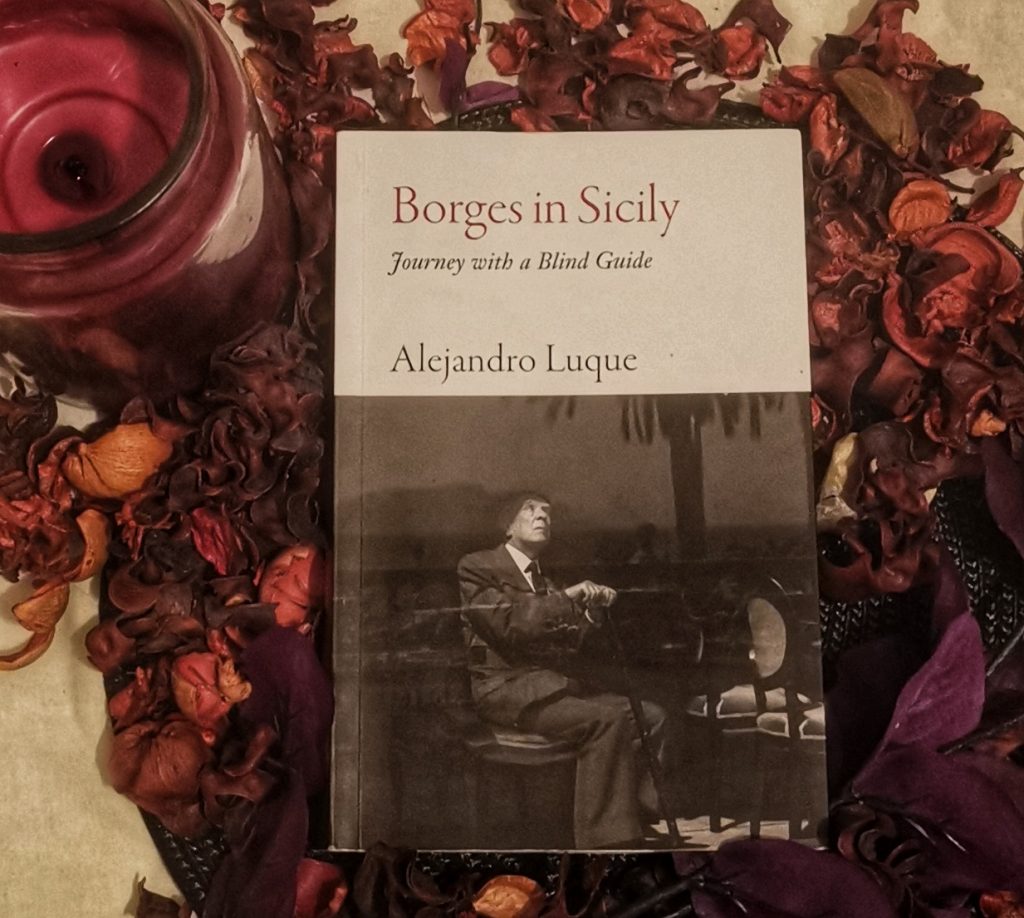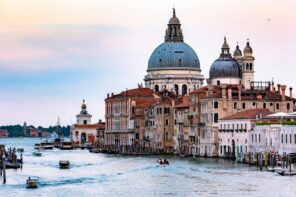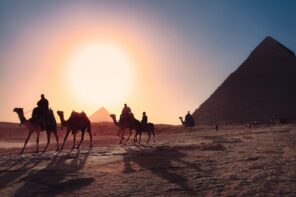Borges or I should say, Jorge Luis Borges, was predominately a poet and short-essay writer from Argentina. Awarded a Nobel Prize for Literature posthumously, Borges was highly influential to 20th century Latin American Literature due to his stories that, in part, were laden with philosophical meanings. What is possibly even more awe-inspiring though is the fact that during his 30’s Borges’ sight begun to deteriorate but it did not stop him from lecturing, writing, and travelling.
During his later years, Borges decided to embark on a trip to Sicily. He would have been blind by this stage, but thanks to the support of Bagheria-born photographer, Ferdinando Scianna, and his soon-to-be wife, Maria Kodama, he travelled the country for himself aided by their vibrant descriptions.
It is this trip that, years later, influenced Alejandro Luque and his own travels around the Italian Island.
Who is Alejandro Luque?
Alejandro Luque writes on cultural matters for various Spanish publications and is the former cultural correspondent for the national paper El País. He has published seven books in Spanish, including a winner of the 1st International Travel Book Prize.
The idea behind Borges in Sicily was born when Alejandro Luque received a book of photographs of the Argentinian writer and decided to retrace Borges’ journey for himself. Luque uses these photographs to meticulously identify the route the elderly writer would have taken hoping to experience the same views and sights for himself. It is through reliving this journey that Luque falls in love with the island, changing his entire attitude to what he perceived Sicily was all about. It would seem that Mario Puzo’s mafia novels
have a lot to answer for.
When I got an invitation to visit Sicily, I wasn’t thrilled as “I imagined a dried-up land, as boring as a lunar landscape, inhabited by macho types dressed in severe black with, perhaps, a scar across the face.” (Page 5)
Borges in Sicily: Journey with a Blind Guide
Part travel diary, part literary history, this unique book is beautifully summed up in the introduction:
“Small grand tour around Sicily. A journey via tarmac, but also along the capricious toll roads of literature, music, art, and memory. An itinerary dictated by an album of photos taken of Borges during his trip around the island, allowing for a variety of shortcuts and omissions.” (Page 1)
We start our virtual trip around Sicily in the capital city of Messina, which sits on the northernmost point of Sicily’s Ionian coast, just kilometres from the Italian mainland and the Calabrian coastline. It appears to be a place that leaves Luque completely underwhelmed, seeing it as a rubbish tip and a location where ‘mangy stray dogs’ camp out. Inland the town is overrun with ‘dun-coloured facades’ and factories while the modern part of the city is full of ‘coarse modern blocks’ for those choosing to live in a place that is bombarded with negative thoughts from an array of different writers throughout history including Goethe, Salvatore Quasimodo
, and Elio Vittorini
.
“The place is a daughter of the apocalypse…” (Page 11)
In all honesty, it is a struggle to see any beauty behind the discouraging words, although I am sure there must be some. It probably does not help that Messina has been devastated by so many earthquakes, causing much of its splendid past to be destroyed.
“Plague, cholera, and natural catastrophes have all savaged the place. They say a quake as late as 1908, left a toll of 60,000 dead, added to which are the victims of allied bombings during the Second World War.” (Page 11).
It’s therefore not surprising that Luque and his party of friends do not stay long in the city, instead choosing to head off to Salina and the surrounding areas in hope of finding some more picturesque locations.
During one of his more attractive stop-offs near Salina, Luque remembers a book written by Lawrence Durrell about his adventures around Sicily while he is swimming out to an islet nearby Pollara Beach; a beach where supposedly the waters will remind people of the Caribbean. It is also the beach where Il Postino (The Postman
) was filmed, inspired by Antonio Skarmeta’s novel about the prize winning poet Pablo Neruda.
As we move around the island, Luque is clear about what he likes and what he doesn’t.
Syracuse, also known as the city of balconies, is far more orate than other places visited and is a place that he instantly falls in love with, noting that the cathedral is also definitely worth a visit as it was once a Greek temple honouring the goddess, Athena.
“Syracuse is a love at first sight, an instant happiness which kidnaps the senses.” (Page 36)
Catania however, does not fill him with the same warmth and he cannot wait to leave and by the time he reaches Trapani, he seems to be in a state of sensory overload.
Trapani -“…the mix so common to almost all Sicilian towns gives rise to an already familiar, but fascinating confusion: a baroque chapel followed by a simple seventies block of flats, next to which you find a hallway of a renaissance mansion, and then a rationalist office building, whilst further on there is a church with a nod to the gothic… ” (Pages 151-152)
We may be following in Borges’ footsteps but Luque is forthright with his opinions and is happy to disclose when places do not meet his expectations. Agrigento for example is a place, highly rated by many and appears in all of the travel guides as a must-see historical site, and yet for the author himself, it was a place he could not wait to leave.
It appears this is more than simply a book following in the footsteps of a writer he clearly admires. It seems to also be a book about discovering the island for himself and exploring the literature, culture, and history of a place he had decided he didn’t like even before arriving. If anything, this travelogue proves that the impressions we gain from others; the thoughts that then begin to colour our own ideas, are not necessarily correct. Often reality exceeds our own imagination.
My Thoughts on Borges in Sicily
Having been gifted this title as part of the Haus Publishing Armchair Series, I didn’t quite know what to expect. In all honesty, I am ashamed to say that I had never even heard of Jorge Luis Borges before reading it. However, having visited Sicily previously and knowing that I would be heading back to the Italian island for work purposes during 2020 I wanted to see if there were any new insights into a location that has already become a firm favourite of mine.
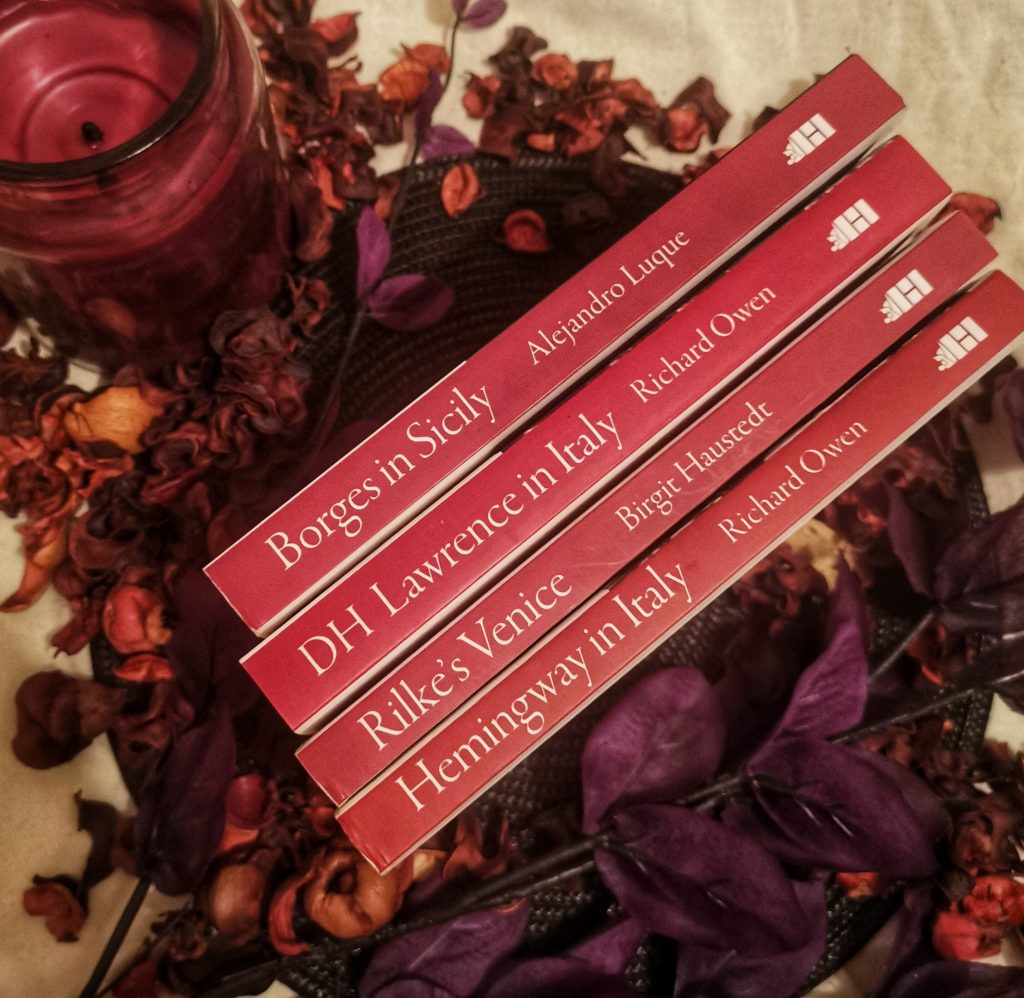
Italian selection of Haus Publishing Armchair Traveller Series
What I liked about this particular narrative is that while initially, Luque sets off to follow in the footsteps of Borges he isn’t necessarily always blown away by the same sights as the person he so clearly admires.
Luque takes the time to explore Sicily, vividly describing each location not just from his own experiences but also relives Borges’ own time on the island, making it a hugely valuable travelogue for anyone researching a trip. Even if you only intend to visit one or two places the book is nicely split into separate chapters so you can dip in and out as and when needed.
I also love the fact that he delves into the culture and history of the island as well as its literary connections. For example, we learn that Guiseppe Tomasi di Lampedusa, author of The Leopard, is buried at the cemetery in Palermo and that several famous writers including Goethe, Oscar Wilde
, and Thomas Mann have all visited Taormina with its narrow alleyways, vertiginous viewpoints, and hordes of knick knack sellers.
He also brilliantly introduces the readers to local Italian writers including: Pirandello, Quasimodo, di Verdura, De Roberto, Sciascia, Bufalino Verga, Brancati, Vittorini, Consolo and the great Camilleri.
Whether you are therefore after inspiration for your next trip or simply want to know more about the island that is often associated with the notorious Cosa Nostra mafia syndicate, this could be just the book for you. I personally love learning more about the literary connections to the island and my reading list has grown vastly because of it.
Have you read this or any other books on Sicily that you would recommend to others?
Disclaimer: Some links in this article are affiliate links, which means that if you purchase through them, we receive a small commission.
If you are based within the UK or the US and prefer to support independent bookshops, then you can find a full list of all the books and authors mentioned in this article on our bookshop page.
Did you enjoy this article? Then PIN it for later…
